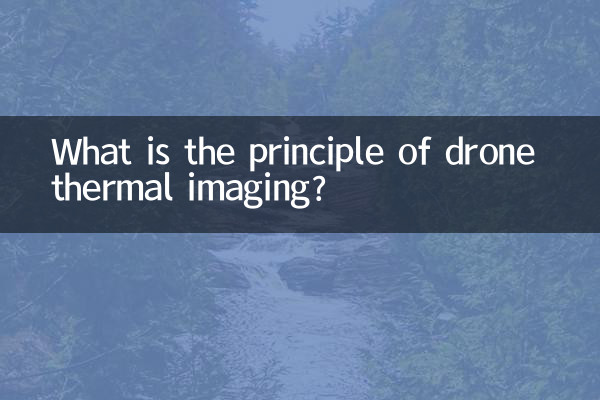What is the principle of drone thermal imaging?
In recent years, drone technology has developed rapidly and its application fields have continued to expand, among which thermal imaging technology has become one of the hot topics. Drone thermal imaging technology combines the high maneuverability of drones with the precise detection capabilities of thermal imaging, and is widely used in firefighting, agriculture, power inspection, search and rescue and other fields. This article will provide an in-depth analysis of the working principle of drone thermal imaging, and sort out the hot topics and hot content on the Internet in the past 10 days.
1. Working principle of drone thermal imaging technology

The core of drone thermal imaging technology is the infrared thermal imaging camera, whose working principle is based on the infrared radiation emitted by the object itself. Here are the key principles:
| principle | illustrate |
|---|---|
| infrared radiation | All objects with a temperature above absolute zero (-273.15°C) emit infrared radiation, the intensity of which is proportional to the object's temperature. |
| Thermal imaging camera detection | The thermal imaging camera receives the infrared radiation emitted by the object through an infrared sensor and converts it into an electrical signal. |
| image generation | The electrical signal is processed to generate a thermal image, with different temperature areas displayed in different colors or grayscales. |
| Drone mounted | The thermal imaging camera is installed on the drone and transmits real-time images back to the ground station through wireless transmission to achieve remote monitoring. |
2. Application scenarios of drone thermal imaging technology
Drone thermal imaging technology is widely used in many fields because of its efficiency and flexibility:
| Application areas | Specific use |
|---|---|
| Firefighting | Heat source positioning, personnel search and rescue, fire monitoring, etc. at the fire scene. |
| agriculture | Crop health monitoring, irrigation management, pest and disease detection, etc. |
| Electric power inspection | Thermal defect detection of high-voltage lines and substations to prevent equipment failures. |
| search and rescue | Search for missing persons at night or in complex environments. |
| Building inspection | Building insulation performance evaluation, leakage point location, etc. |
3. Hot topics and content on the entire network in the past 10 days
The following are hot topics and hot content related to drone thermal imaging technology in the past 10 days:
| hot topics | Hot content |
|---|---|
| Drone firefighting application | Fire departments in many places have adopted drone thermal imaging technology to improve fire rescue efficiency, which has attracted widespread attention. |
| Agricultural drone upgrades | New agricultural drones are equipped with thermal imaging functions to help precision agriculture and reduce the use of pesticides. |
| Electric power inspection innovation | State Grid promotes drone thermal imaging inspections to significantly reduce the risk of manual inspections. |
| Search and rescue case sharing | A certain place successfully found a missing elderly man using drone thermal imaging, and the technology was praised for its practicality. |
| Technical bottleneck discussion | Experts discuss the performance limitations and improvement directions of drone thermal imaging in extreme environments. |
4. Future development trends of UAV thermal imaging technology
With the continuous advancement of technology, drone thermal imaging technology will usher in a broader development space:
1.Resolution improvement: In the future, the resolution of thermal imaging cameras will be further improved and able to capture more subtle temperature differences.
2.Intelligent analysis: Combined with artificial intelligence technology, drone thermal imaging will achieve automatic identification and analysis, reducing manual intervention.
3.multispectral fusion: Thermal imaging is integrated with other sensors (such as visible light, lidar) to provide more comprehensive data support.
4.Miniaturization and lightweight: The size and weight of the thermal imaging camera will be further reduced, adapting to more types of drones.
5.cost reduction: With the popularization of technology, the cost of thermal imaging equipment will gradually decrease, promoting more industry applications.
5. Summary
With its unique advantages, drone thermal imaging technology is changing the way traditional industries work. From firefighting to agriculture, from electricity to search and rescue, its application scenarios are constantly expanding. In the future, with the iteration of technology and the reduction of costs, drone thermal imaging technology will become a standard tool in more fields, bringing more convenience to social development and people's lives.

check the details

check the details